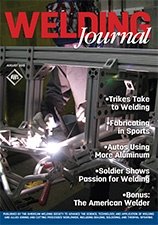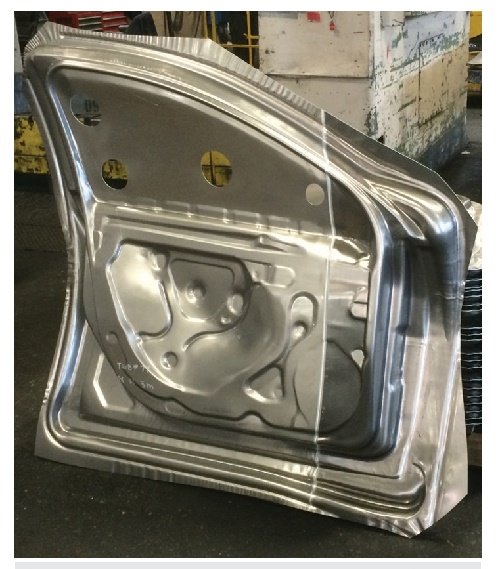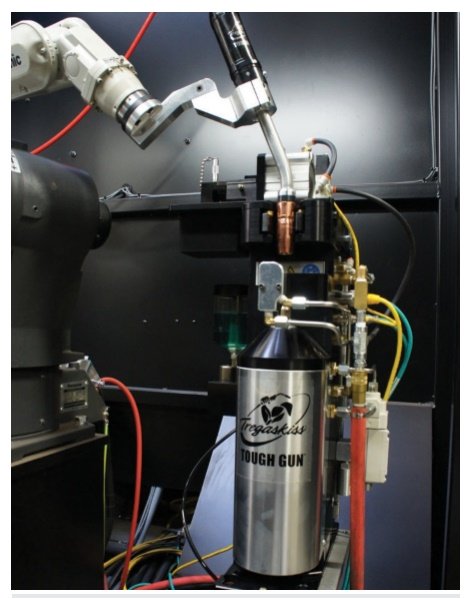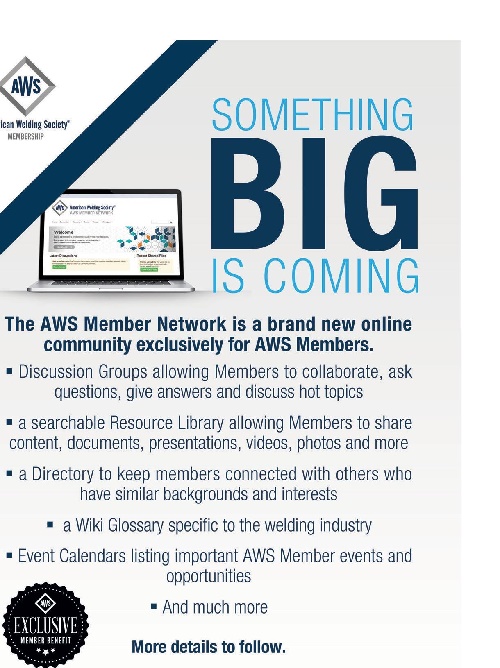| Back to Back Issues Page | ||||||||||
 |
||||||||||
|
PWL#157, aluminum tailor-welded blanks, Dangers in thoriated W, AWS Member Forum, Links to Magnesium September 01, 2016 |
||||||||||
| We hope you will find this Letter interesting and useful. Let us know what you think of it.
PWL#157
PWL#157, Advances in aluminum tailor-friction-stir-welded blanks, Extend Consumable Life in Robotic Welding Cells, Warning on Dangers in using thoriated tungsten electrodes, New AWS Member Network, Bulletin_122 Resources on Magnesium - Metals Part 6 for building an Encyclopedia Online, Question and Answer, Comments and much more...
September 2016 - Practical Welding Letter - Issue No.157
Important Notice Check the New Mid August Bulletin including
Resources on Metals, Part 6.
DON'T USE REPLY to send your messages! Use the Contact Us form instead. This publication brings to the readers practical answers to welding problems in an informal setting designed to be helpful and informative. You are urged to pass-along this publication to your friends, if you like it, and if you think they may enjoy it. The addresses reported hereafter were live and correct at the time of their publication. Note: References to articles or other documents are given here in one of two forms. If they are URL's (Uniform Resource Locator), which is the analogue of an address, they begin with "http://..." or "www.". If the information is important to you as we hope, you may save the selected pages in a suitable folder on your Computer for easy reference.
1 - Introduction 2 - Article - From Lab to Production Line 3 - How to do it well: Extend Consumable Life 4 - Welding with non-consumable thoriated tungsten electrodes 5 - Online Press: recent Welding Related Articles 6 - Terms and Definitions Reminder 7 - AWS Member Network 8 - Site Updating: Bulletin_122 - Resources on Metals Part 6 Magnesium 9 - Short Items 10 - Explorations: beyond the Welder 11 - Contributions: Question and Answer 12 - Testimonials 13 - Correspondence: a few Comments 14 - Bulletin Board
2 - Article - From Lab to Production Line
Also
well mature welding processes taken for granted can be amazing, as exceptional breakthroughs are developed. And yet, in the case reported in the August 2016 Issue of the Welding Journal at page 36, there was still a big gap to fill, in order to make the process suitable for the ambitious automotive production program in store. The driving force for such a demanding effort was strong enough to command the attention of two people who joined their endeavors to create a viable solution to a specific question: how to weld together aluminum alloy sheets of different thickness at high speeds unheard of before, to satisfy production requirements. The purpose is to substitute aluminum for steel in making cars, to meet fuel efficiency guidelines to become imperative in just a few years. As the authors remark in the said article, laser beam fusion welding, "with inherent susceptibility to porosity, hot cracking and elemental loss in the weld seam is unacceptable for producing welded blanks designed for stamping". Friction stir welding had none of the shortcoming of fusion welding but was considered too slow to be effective and had never before been used to join different thickness. Much thought and experimentation went into trials and errors, until useful parameters were finally developed, but then the speed could be raised easily to meet requirements. Furthermore, the developers found that quality was better and joints stronger for faster welding speed. The authors expect that the limiting factor to aluminum adoption of tailor-welded blanks will depend on how fast manufacturers can convert their manufacturing lines from steel to aluminum. The article concludes that "In two to three years, the parts will likely be common components for many manufactured automobiles". Interested readers are urged to seek the original article, providing a wider view of the inherent problems. See also:
High Speed Joining of Dissimilar Alloy Aluminum Tailor Welded Blanks
Welded Blanks for an aluminum door that is 62% lighter and 25% cheaper than before. [From the Welding Journal, August 2016, Page 39]
3 - How to do it well: Extend Consumable Life
Keeping a GMAW robot doing its job with minimum hindrances is just one way to improve its productivity. An article, published in the August 2016 Issue of the Welding Journal at page 84 addresses the subject of the nozzle cleaning station that should include a sprayer for antispatter compound delivering. This should be considered a simple and effective addition to robotic weld cells, likely to pay for itself in a reasonable time by extending the life of nozzle, contact tips, and gas diffuser. Reduction of changeover downtime can also be important. The article mentioned above provides a few tips intended to keep the tools for optimal performance by using preventive maintenance activity. Readers working with robotic weld cells are invited to see the original article. Comments are welcome.
A nozzle cleaning station (also called a reamer), along with a sprayer for delivering antispatter compound, a simple, effective additions to a robotic weld cell. [From the Welding Journal, August 2016 - page 84]
4 - Welding with non-consumable thoriated tungsten electrodes Hidden in plain view in a page of advertisements to other, non thoriated tungsten electrodes, on page 9 of the August 2016 issue of the Welding Journal, one can reads the note that "Thoriated Tungsten should be avoided!". The note goes on, reporting that the International Institute of Welding (IIW), Doc. IIW-2509 advises that "use of thoriated electrodes ceases as soon as is practicable and that, until that change is completed, special care is taken to inform workers of the hazards and to implement all the other protective measures which are detailed in the report." Download the report: The page makes also reference to the AWS Safety and Health Fact Sheet No. 27 on Thoriated Tungsten Electrodes, available from This document warns on special precautions to be in place for collecting ground dust, when grinding such electrodes. It is shocking that, in order to avoid production disruption, the authorities did not issue an immediate and universal ban on the use of thoriated tungsten electrodes, at the cost of endangering unaware welders. It is strongly recommended here to all welding shops that still use thoriated tungsten electrodes, to make sure that the precautions advised by AWS are immediately implemented. Then the best alternative electrode can be tested and selected.
5 - Online Press: recent Welding related Articles Colorful Laser Plastic Welding New welding procedure for dry docking Super powered microscope will help crack microstructures Next generation Mercedes-Benz C Class to get more aluminium and become lighter TWI Connect+ - May/June 2016 - Issue 15 6 - Terms and Definitions Reminder Lamination is a type of discontinuity with separation or weakness generally aligned parallel to the worked surface of a metal. Generally detectable in the base metal by ultrasonic testing. Mechanized Welding is done with equipment that requires manual adjustment of devices in response to visual observation of the welding, while the torch, gun or electrode holder is held by a mechanical clamp. Nontransferred Arc is established between the electrode and the constricting nozzle of the plasma arc torch or thermal spray gun. Open Root Joint is an unwelded joint without backing or consumable insert. Peening is the mechanical working of metal using impact blows from a hammer or from a stream of high speed balls or projectiles. Recrystallization is the formation of a new, strain-free grain structure from that existing in cold-worked metal, usually accomplished by heating. Or the change from one crystal structure to another, as occurs on heating or cooling through a critical temperature. Also a process, usually physical, by which one crystal species is grown at the expense of another. Solid State Welding is a group of welding processes that produce coalescence by the application of pressure without melting. Toe of Weld or Weld Toe is the junction line between the weld face and the base metal.
7 - AWS Member Network
Just recently (Tues, 16 Aug 2016) I found in may email inbox a Welcome to the New AWS Member Network. This network is composed of AWS Members, numbering to over 80 thousands. It is a social Forum that publishes daily updates, where members with like interests post questions, comments or news and invite other members to join the discussion. From a short browsing session I see that many questions concern CWI examinations, but also technical welding problems and inspection issues can be found. Any member can post questions, comments or answers, and even upload folders in the Library. It may be a nice initiative, in line with the Social Networks at large. Those who feel at ease in them and like to be part of a community may welcome this opportunity. It could be a useful initiative if it helps members to make friends, networking and solve practical problems. Readers who are not yet AWS Members may be enticed to join, if they value the partnership in the forum, together with the discounts available to Members for purchasing publications and participation to Events. Unfortunately I cannot enjoy this initiative because of my outdated personal views, that consider tinkering with social media a huge squandering of time. Nevertheless it is to be expected that the great majority of members will embrace the Forum with enthusiasm to multiply contacts and interactions. What do you think of this new initiative? Let us know! Anyone wishing to write to me, outside the Forum, is invited to do so by using the Contact Us Form.
8 - Site Updating: Bulletin_122 - Resources on Metals Part 6 Magnesium The Page of this Month introduces more information on Resources on Metals, Part 6 aimed to enrich your Materials Encyclopedia built from articles gathered online. This page is dedicated to Magnesium. It is intended to help readers build their own Encyclopedia Online, and was recently published as Bulletin 122. It abounds with basic Sources that provide much information on the Element, the Chemistry, the Metallurgy, but also on Dangers, especially Fire. Also commercial pages are shown, not to be endorsed, but as providing useful information. Readers are urged not to delay their downloading and organizing of selected pages in the folders of their own Encyclopedia, to prepare for future learning and/or consulting.
9 - Short Items
9.1 - Ejector is a device mounted in such a way that it removes or assists in removing a formed part from a die. 9.2 - Ferrograph is an instrument used to determine the size distribution of magnetic wear particles in lubricating oils of mechanical systems. 9.3 - Graphitic Corrosion occurs in gray iron in which the iron matrix is selectively leached away, leaving a porous mass of graphite behind; it occurs in relatively mild aqueous solutions and on buried pipe and fittings. 9.4 - Hindered Contraction occurs where the shape will not permit a metal casting to contract in certain regions in keeping with the coefficient of expansion. 9.5 - Impact Load is an especially severe shock load such as that caused by instantaneous arrest of a falling mass, by shock meeting of two parts (in a mechanical hammer, for example), or by explosive impact, in which there can be an exceptionally rapid buildup of stress. 9.6 - Laminate is a composite metal, usually in the form of flat sheets, composed of two or more metal layers so bonded that the composite metal forms a structural member. Also to form a metallic product of two or more bonded layers.
10 - Explorations: beyond the Welder Why the Deadly Louisiana Flood Occurred Can a Supercomputer Suggest the Best Cancer Treatment? Love in the Age of Machine Learning New Membrane Could Save $2 Billion a Year for U.S. Industries Why Your Children's Commute Won't Look Anything Like Yours
11 - Contributions: Question The following question was made by Richard Szekeresh, Principal Structural Engineer of the City of Cincinnati: "According to AWS D1.2 to what extent is the structural engineer required to design the aluminum welds and where does the fabricator's weld engineer take over? Specifically, is the structural engineer required to provide full and complete weld information including the location, type, size, and extent of all welds like in AWS D1.1 (for steel welds) or is this the responsibility of the fabricator's weld engineer for aluminum welds?" The following answer was kindly provided by Mr. Anthony Rangus of Materials Engineering Technology: "I think the Foreward, paragraphs 1.2 & 1.3 and Chapter 2 of D1.2 are pretty clear. The engineer is required to provide the design requirements (sizing members, welds, connections etc.) per paragraph 2.2 and the contractor (welding engineer etc.) is ONLY responsible for 1.3.2 Contractor's Responsibilities. The Contractor is responsible for the qualification, fabrication and inspection required by this code and the contract documents. Which is pretty clear. Welding, fabrication, NDE, procedure qualifications are all your welding engineer better be doing. Structural design, choosing weld types etc. based on the design loads is an engineering responsibility." 12 - Testimonials On Thu Aug 04 01:57:30 2016, the following results were submitted from the "Form 5" on welding-advisers.com: Name: Olga Roslan Thank you.
Name: Kenneth Rodig Dear Mr. Levi, thanks a lot. I appreciate your help. Best Regards 13 - Correspondence: a few Comments As it could have been predicted, no comments were received to Mr. Anthony Rangus' Worries published in the last issue of this letter. It is probable though, that at least some readers agreed with the Author. It might be that a discussion on the Worries could be conducted on the new AWS Member Forum described above at (7). If practical suggestions could come forward from the discussion, powerful Standards Committees might find mandatory ways to require independent revision of working documents (WPS), to assure Code compliance. 14 - Bulletin Board 14.1 - 3rd Welding Education, Skills & Certification Conference. 14.2 - Next Generation Collaborative Robots & Automation Technologies Automotive Manufacturing 2016. 14.3 - Lasers Conference. 14.4 - 19th Annual Aluminum Conference.
See you next time...

Watch - The Video:
and also
BUILT BY: Click on this Logo NOW! No better way to get to know SiteSell, Specific questions about SiteSell?
Copyright (©) 2016, by Elia E. Levi and
Back to Past Issues of PWL.
|
||||||||||
| Back to Back Issues Page |




